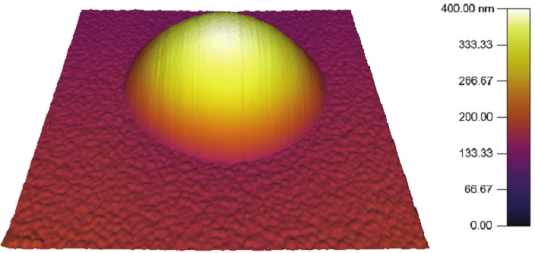Surface nanobubbles and surface nanodroplets






In heterogeneous catalysis, gas bubbles often form at the catalyst surface, hindering its efficiency. In their smallest known form, the bubbles come as so-called surface nanobubbles. These are only a few femtoliters in volume and can stay at the interface as long as several hours or even days. The formation of surface nanobubbles can occur not only through (catalytic) chemical reactions, but also through electrolysis, or when the interface experiences gas super-saturation due to a change of the solvent or in the temperature, or by pressure reduction.
Very similar to surface nanobubbles are surface nanodroplets, which are liquid nanoscale domains on the solid surface in contact with an immiscible bulk liquid. Also these are relevant in catalytic reactions that produce an oil phase in an aqueous environment or vice versa.
In this project we want to experimentally analyze and understand the properties and dynamics of surface nanobubbles and surface nanodroplets, using ultrafast imaging, AFM, and in-situ spectroscopic techniques. On the one hand, we aim to achieve at single nanobubble and single nanodroplet spectroscopy. On the other hand we want to understand collective effects of surface nanobubbles and surface nanodroplets, in particular the Ostwald ripening, which is related to their size distribution, surface coverage, and spatial arrangements.
Project leader: Prof. Detlef Lohse


























